Table of contents
What are the objects of macumba used for?
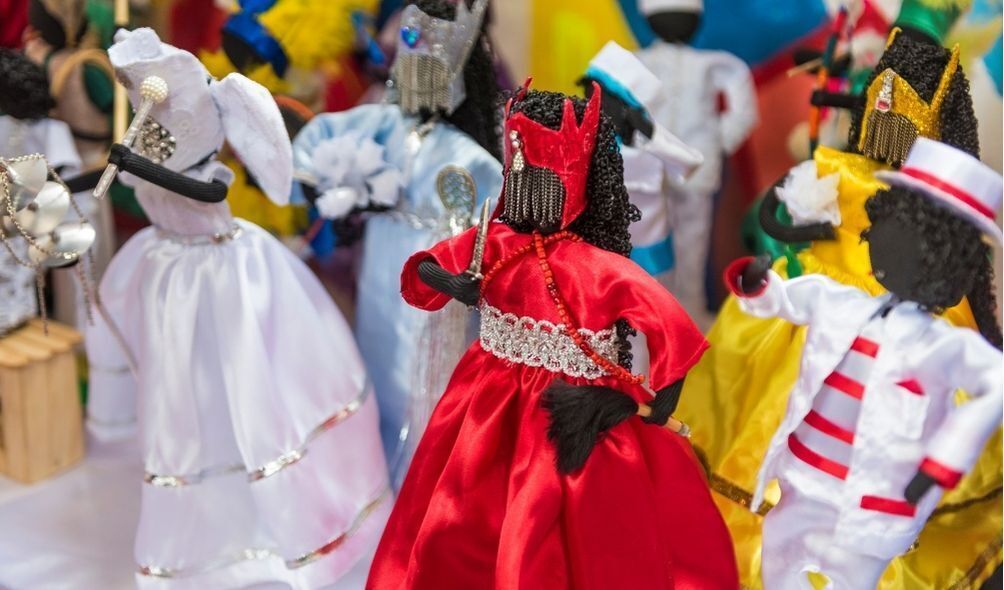
Many people have had the opportunity to find small offerings in places such as crossroads, on the street, in the cemetery, by the sea or river and many others. Popularly, this is called macumba.
There are many objects of macumba that are completely unknown to the public and others that are more widespread. Understand better what these religions, instruments and practices are, to be able to use the term macumba with more accuracy and propriety.
Understanding religion
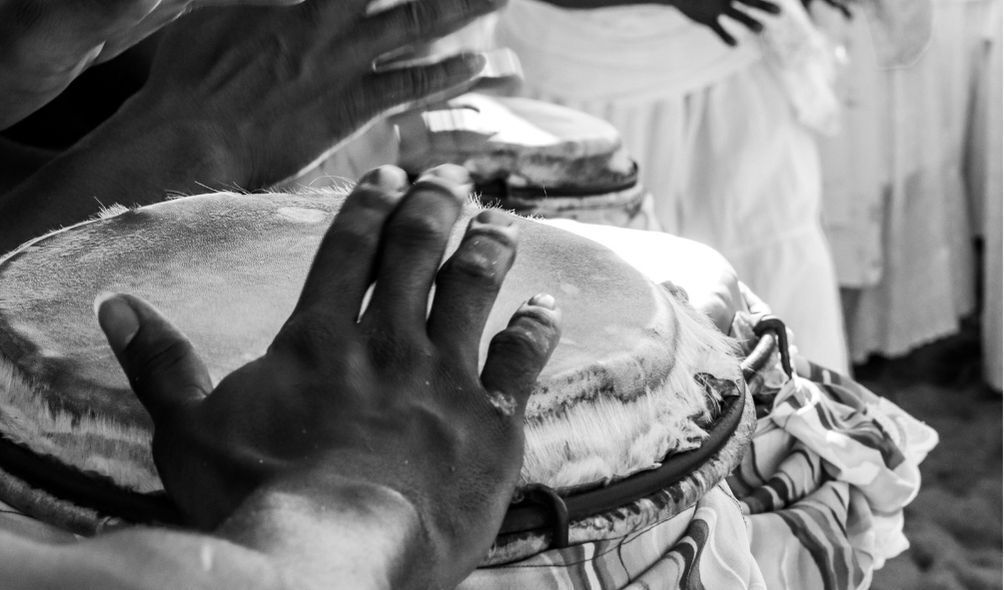
Before they were kidnapped and brought as slaves to Brazil, people lived in their villages, each with their own values and beliefs. Religion was very particular and usually they worshipped some deity related to their history or to nature.
Then, each nation had its own Orixá, but the beliefs mixed and merged in Brazil, with the union of several different ethnicities. It was from then on that the African pantheon began to take shape, giving rise to the Afro-Brazilian religions.
Correct name
In reality, macumba is the name of a tree and of a percussion instrument that originated in Africa. It is also a general name for the religions of our African matrix. However, people have long associated the name with magic, offerings or spells.
Although it is not the most correct term, it has become very common, being used pejoratively even among practitioners of religions of African matrix. What is usually called macumba can be one of these options:
Religious Intolerance
Offerings and other 'macumbas' are as common as potions made by Druids or offerings at the altars of the Gods in pagan religions. Just as the host represents the body of Christ and wine his blood, other foods may have other representations in other faiths.
For a long time, these practices were prohibited by the church, in an attempt to coerce its devotees. Many died burned at the stake and intolerance remains to this day, but this time the flames destroy the terreiros.
Religious intolerance is not only ignorance, it is a crime, but it is being practiced even in the supposed information age. Macumba is a manifestation of faith, a request, a thanksgiving to a particular God/Orixá. Understanding is optional, but respect is fundamental.
History of Umbanda
Umbanda was born from the union of spiritism with religions of African matrix, such as Candomblé. It also incorporated some elements of shamanism, linked to our indigenous peoples, thus becoming an eclectic and quite complex religion, with devotees all over the country.
In it, the Orixás and their phalanxes are extremely evolved entities, who seek to guide humanity towards peace and prosperity. There is only one superior entity, who can be called God, Olorum, Nzambi or as you see fit.
In Umbanda, there is no sacrifice of animals for any kind of work, be it ebó, despacho or whatever. There are 9 main Orixás that take their phalanxes within the 7 lines, where the entity is incorporated into the medium to be able to work, be it with healing, opening of paths or relief of pain.
History of Candomblé
Candomblé is also a mixture of faiths, born from the union of several creeds from Africa. Much more connected to nature and the elements, it believes that the Orixás have lived among us and that we are all their descendants, with personality traits well marked in each Orixá.
Spread around the world, it is known with other names in other countries, but the basis of the belief system is the same. In Brazil, Candomblé is represented by 3 Nations, Ketu, whose God is Olorum; Bantu, with the deity NZambi; and Jeje, with the God Mawu.
In Candomblé it is acceptable to use animals in sacrifices, but following strict protocols. Often these animals are used as a source of food for the locals. The number of Orixás in Candomblé is higher, around 16 deities.
Difference between Umbanda and Candomblé
Although both religions have their roots in Africa, Candomblé and Umbanda have significant differences. For example, while in Candomblé the orixás are ancestors of humans, in Umbanda they are entities.
Other points of difference are the number of Orixás, the presence of incorporation of the medium, which occurs in Umbanda, but not in Candomblé and the presence of animal sacrifices, common use in some Candomblé terreiros, but prohibited in Umbanda.
Objects used in Umbanda
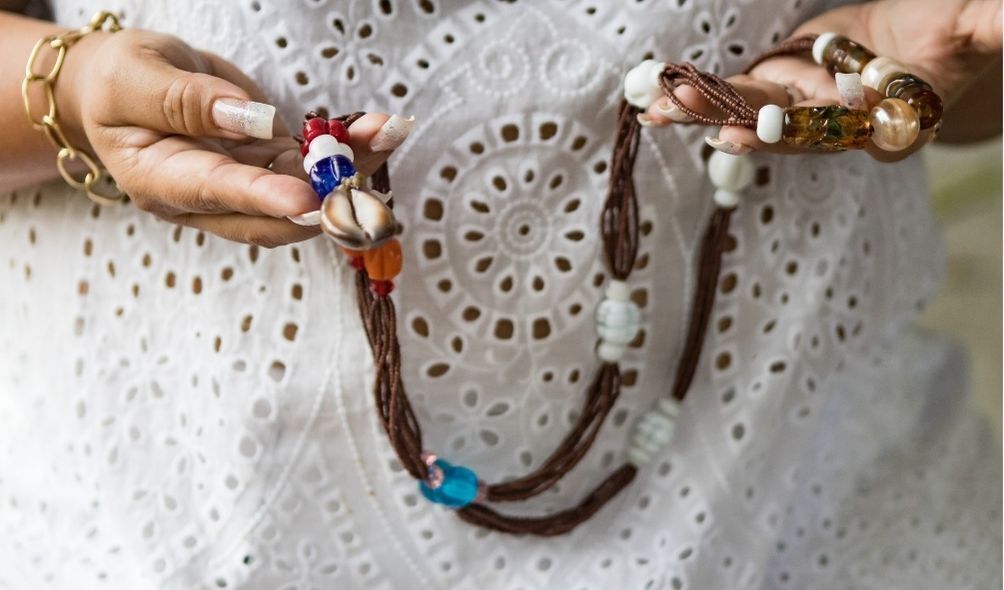
Both Umbanda and Candomblé use some objects to help in the direction of the intention and in the relationship with the Orixás and entities. Among them are the guide, candles, pemba, images and the bell.
Guide
Guia is a type of ritualistic necklace that strengthens the bond of an initiate with their Orixá. It must be made by the child himself, so that it is impregnated with his axé (his own energy, to strengthen the bond). Then, the guia is washed with the specific herbs of the head Orixá and delivered at the initiation.
The guide must be made with natural elements, to be able to transmit the energy. In addition, it must follow the colors and quantities indicated for your Orixá, with the appropriate length for the phase of the initiate. The form of use, if crossed, on the wrist or neck, also has its meaning.
Candles
Whether in Umbanda or any other religion that deals with energy, through the transmutation of fire, allied to the intention, candles will be present. They are used in the Congá (altar with the images of Orixás), for the Orixás' scratched points, offerings and everything that involves some kind of energy.
Colors represent not only elements of nature or intentions, but even the orixás. for example:
Pemba
The pemba is nothing more than limestone chalk, more rigid than school chalk, and with a more rounded shape. It is used both as a stick and as grated powder. Before fulfilling its role in the terreiro, it must be consecrated, thus giving it energetic value.
Used mainly for scratching the point - which are drawings made to firm up a certain intention, whether it is to discharge or the arrival of some entity, the pemba should not be used by just anyone. Its powder version is blown to create an aura of protection, both in the house and in the medium.
Images
Images are representations of the deities of any religion and it would be no different in Umbanda. They are figures made of various materials, representing the Orixás, with their sacred garments and instruments. They can be adorned with guides, conch shells and other ornaments.
Whether to compose the Conga, for some specific work or to have in your altar at home, the image of the Orixá is fundamental. After all, it represents not only your faith, but the lessons you need to learn from it. It also helps to direct the intention, having better results.
Bell
The bell used in Umbanda liturgies is called Adjá, Adjarin, Ajá or Aajá. It can have between one and three bells together, being made of metal, with a handle of the same material or of wood. Besides announcing the beginning of the works, Ajá is also used to help the medium.
The person in charge of the terreiro is the one who takes care of the Adjá, and it can also be someone designated by him. Besides helping in the incorporation process, it also eliminates any denser energy in the place, being used even in the maceration of the herbs and in the amaci.
Objects used in Candomblé
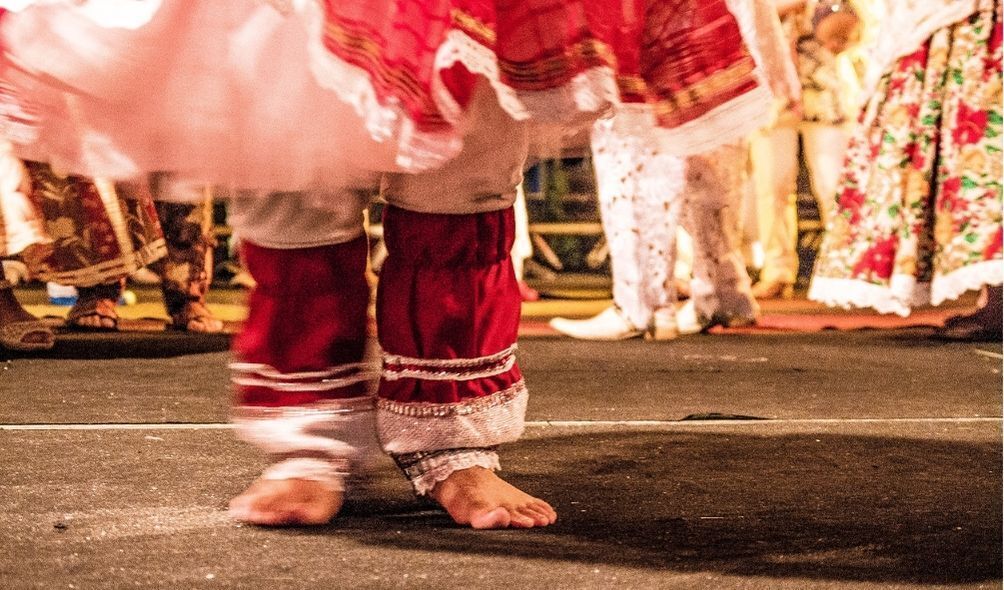
Like Umbanda, Candomblé also has its objects used in its liturgies. They are related to its beliefs and each one has a history and reason for being used. Learn more about the threads of beads, atabaque, agogô and alguidar.
Also explained here are the conch, the quartinha, tools used and what are settlements. Understand what is the xere, Adjá, Aquidavi and mariô also, demystifying much of the erroneous beliefs about religion.
String of beads
The bead thread (ilekés), just like the guide used in Umbanda, is unique and made by the practitioner. Originally, the bead threads were made of elements from nature, such as seeds, stones, metals, teeth or horns. Today, it relies on elements such as cut stones or beads made of wood, glass or even plastic (less recommended).
There are various types of bead strands, such as:
Atabaque
The atabaque is a sacred instrument, consisting of a tall, narrow drum covered in leather. Its spiritual utility is very broad, serving mainly to attract the axé of the entity or orixá, with certain vibrations that are consistent with these beings of light.
In addition, it is important to highlight that the atabaques also have a central role in the terreiro, ensuring a uniformity of the energy of the people who are present. The playing of this instrument serves to maintain the good energy of the mediums, valuing the stability of their vibrations, which favors the process of connection with the entity.
Agogo
Also used in capoeira and considered as the first musical instrument of samba, the agogô is very important in the terreiros. This instrument is composed of two iron pieces that are connected and need to be tapped with a wood so that they emit a sound.
Even the agogô is the musical instrument consecrated to the orixá Ogum, possessing a strong axé when properly prepared. The preparation of this instrument consists of a previous herbal bath, and may also require the consecration of vegetables to it, in order to tune its axé with that of the orixá.
Alguidar
The alguidar is a clay bowl used for food storage, meat treatment and many other functions. For Candomblé and Umbanda, it is also an important tool, being indispensable for storing the content of offerings to the orixás or entities.
This container is so famous and traditional that even today, the Portuguese usually call wide vessels alguidar. Currently, they have fallen into disuse in the daily life of many homes, but still have a very important place in the terreiro, being essential for the activities that are done there.
Quartinha
This is a sacred object in Umbanda, it is a type of vase that can have handles or not. If it has handles, it will be consecrated to a female Iabá or entity and if not, it will be for a male orixá or entity.
Therefore, the quartinha is a container consecrated to the being of light, carrying all his axé. Therefore, it is recommended that it be painted the color of the orixá or entity for which it is intended, or white.
It is worth noting that the liquid that is inside the quartinha must always be replenished and cannot dry out. In addition, it is essential that the person washes this object once a week, changing the liquid. Inside the quartinha, the individual may also place stones and other symbols that represent the orisha or entity.
Buzios
Conch shells are a specific type of shell used in conch games in Candomblé and Umbanda. The objective of using these utensils is centered on predictions about the future and divination in general, also addressing the past and the present. It is worth mentioning that they can also be used to discover the person's adjunct or front orixá.
Before being used, the shells must go through an energetic cleansing, including the presence of prayers, in various rituals performed by someone from candomblé. Generally, these prayers are directed to Exu, Oxum, Ifá and Oxalá, besides the fact that only someone who is of the religion can administer the game of shells.
Tools
The tools in Candomblé are related to the Orixás and can be thought of in two ways, as the symbol of the terreiro or of the Orixás themselves. In the first case, the tool stands at the entrance of the place and, made of iron, represents the Orixá that guards the house.
The tools can also be understood as the instruments that represent each Orixá. For example, Iemanjá is known by her mirror, Xangô by the two-bladed axe, Exu by the trident, Ogum by the spear and shield or swords, Iansã by the sword and eruexim and so on.
Settlements
It is essential that there are settlements in the terreiros, since they consist of an area of energy discharge, protection and irradiation of the axé of some orixá or entity to generate good energies in the environment. Therefore, it is a sacred area in Umbanda or Candomblé.
For the preparation of the settlement, it is important that the region be clean physically and spiritually. After that, one places sacred components that refer to certain orixás or entities. These elements range from stones to statue-shaped figures.
Xere
Consisting of a long and narrow gourd, this instrument is made of metals, such as copper or brass. The Xere is consecrated to the orixá Xangô, lord of justice and thunder, and is a symbol of rationality and majesty. Therefore, it is always present in candomblé rituals with Xangô, serving to honor this orixá and all the others, except Omolu.
In the itans, Xangô is also very close to the Xere, so that he has caused a conflict with his mother because of this instrument. In this specific itan, this orixá arrests his mother, accusing her of stealing this tool.
However, Xangô learned that he had wrongly accused her and went to ask for her forgiveness in prison, finding her dead. When he saw this, he cried and shook Xere, resurrecting his mother who made him promise that he would never commit injustices again.
Adjá
Basically, the adjá consists of a small metal bell, which can also be accompanied by another bell and even with two more bells. Therefore, this tool can be composed of 3 bells and must be placed around the neck of the Candomblé priest.
This bell can be made of bronze or by golden and silver metals. In any case, its utility is to tune the energy of the orixá in rituals, feasts or offerings. In addition, it facilitates the trance in the medium, so that it connects more easily to its purposes.
Aguidavi
In Candomblé Queto, a kind of stick is used to play the atabaques, unlike in the Angola nation, which uses one's own hands. This specific stick is called Aguidavi and is shrouded in respect by the practitioners of this religion, since it is used to play the atabaques that are sacred.
The Aguidavi is made from trees that are considered sacred by Candomblé. Among these trees, the most used for making this tool are guava and araçazeiro. The Aguidavi has a dimension equivalent to the ruler, with around 30 to 40 centimeters.
Mariô
The mariô is the dendê leaf, consecrated to the orixá Ogum. It represents protection, especially in relation to eguns, which are disembodied spirits. Therefore, it is also related to the orixá Iansã, with the quality Oiá Ibalé, which is associated with the cult of Egunguns.
Therefore, it is used to wrap the windows and doors of any structure present in a candomblé terreiro, aiming at protection and attunement with the axé of the orixá Ogum. It is present in the itãs of Ogum, aiming at the protection and zeal of this orixá for those who place the mariô at the entrance of the home.
Is there an evil object?
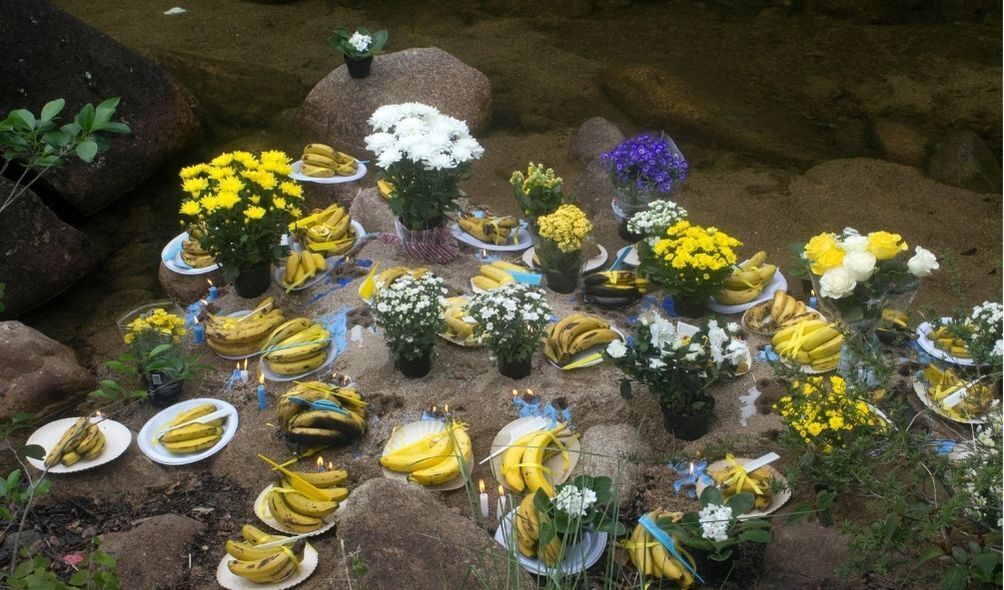
There are no evil objects, neither in Umbanda, nor in Candomblé. In reality, the meaning that a thing has is related to the intention that you put in it. For example, a candy given by someone sincere is much better than a dinner made by someone who doesn't like you.
In other words, it's all a matter of intention and energy. Likewise, in an offering, each item has a meaning, all of them being normal objects, whether of daily or ritualistic use. So, now that you know, you can use the term macumba the right way!

